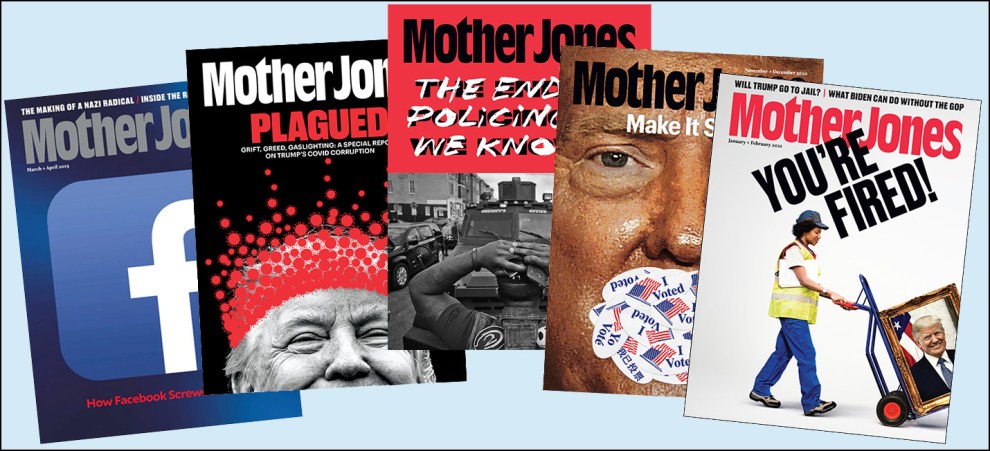Former New York Gov. Mario Cuomo said you campaign in poetry but govern in prose. He might have made a similar observation about losing a race: The morning after is swamped by emotion—heartbreak, exhaustion, and above all spasms of blame-mongering. But as the next election looms, it’s time to put away our Klingon rage and call in Mr. Spock to take a dispassionate look at what really happened.
Spock ears in place, then, there are three main lessons. First, although the 2016 outcome was unquestionably a dismal and depressing affair, especially for women and people of color, the data suggests the election was always likely to be close based on the fundamentals. Second, there was a pair of black-swan events: Russian interference during the final three months of the campaign, and then-FBI Director James Comey’s letter 11 days before Election Day. Third, Hillary Clinton was an unusually unpopular candidate, and the contentious primary with Bernie Sanders made her flaws even more conspicuous. But this perfect storm—certainly this specific perfect storm—won’t happen again. So forget it. At this point, the only thing that matters is figuring out what kinds of big-picture trends are dominant and what that means for the crucial elections to come in 2018 and 2020.
By far the trendiest of the trend explanations for the 2016 outcome—like the soccer moms of 1996 or the NASCAR dads of 2004—is that economic anxiety among the white working class was responsible for Donald Trump winning Wisconsin, Michigan, and Pennsylvania, thus handing him the presidency. According to this hypothesis, Democrats need to win back these whites to stand a chance in 2018 and 2020. Trump has kept the white working class loudly in the center of the political conversation ever since his election, but a closer look at what really happened in 2016 suggests this conventional wisdom is critically wrong.
First things first: The white working class didn’t lose its identification with the Democratic Party in 2016. From 1992 to 2008, as the party nominated candidates as different as Bill Clinton, Al Gore, John Kerry, and Barack Obama, party identification bumped up and down but essentially held fairly steady. It was only a few years after Obama was first elected that white working-class identification with the party plummeted by 12 points. By 2016 all the damage had been done, and none of it had anything to do with Trump or Hillary Clinton. It happened before either one ever participated in a primary debate.
White working-class voters who lean Democratic
(by net percentage)
So what happened? In order to weave our way toward an answer, consider a few other things that took place at the same time. The rate of gun sales rose rapidly after Obama was elected, nearly tripling by 2016. Confidence in the accuracy of vote counting dipped suddenly in 2008, and other polls show that trust in the honesty of elections dropped substantially during Obama’s presidency. And of course there was the sudden emergence of the tea party in early 2009, an outbreak of organized white resentment masquerading as a small-government uprising that was unparalleled in both its intensity and the swiftness of its birth, an astonishingly short 30 days after Obama’s inauguration.
These things all point in the same direction: that the alienation of the white working class from the party associated with racial diversity was caused by the simple presence of a black man in the White House. In the same way that racial anxiety among many whites can be triggered by nothing more than a reminder that they’ll be a minority in the future, the constant presence of a black president on their TV probably does the same.
Now take a deep breath. This is where Mr. Spock comes in. None of this means the Democrats’ only path to victory in 2018 and 2020 is to run candidates who are white men. For one thing, there was a lot more going on during the Obama era than just simple racial triggering. Among other factors, there was the financial crisis and the appallingly overt race-mongering of Fox News, Breitbart, and other right-wing media outlets—especially around events like the Ferguson killing and subsequent protests, which produced a huge deterioration in American views of race relations during Obama’s second term.
Still, racial triggering was the core problem. Whites became more sensitive to threats to their status, and at the same time racial anxiety became more predictive of voting Republican. It didn’t happen everywhere and it didn’t happen to everyone. But it happened enough to tip a close election to the guy who most belligerently stoked that racial anxiety.

US President-elect Barack Obama with his wife, Michelle, and daughters Malia and Sasha during an election night gathering in Grant Park on November 4, 2008, in Chicago.
Joe Raedle/Getty
For Democrats, this is actually good news. It turns out that fanning white fragility can only get you so far: The American National Election Studies program, which has evaluated American attitudes before and after every presidential election since the 1940s, reports that racial resentment among whites has been pretty stable for decades, which suggests the “Obama effect” is likely fairly shallow. Trump’s race-baiting rants may seem like they’re consuming every pixel on the planet, but as we’ll see, they will likely become less effective in the future because the base level of racism he’s appealing to is subsiding. In fact, his overt bigotry is already starting to cost him more supporters than he gains from it. Put this alongside increasing support for Democrats among educated whites, women, Hispanics, and young people, and race is unlikely to be a net loser for Democrats in the future.
None of this means racism or racial anxiety is going away. But the turmoil of the Obama years almost certainly caused only a temporary blip in a steady, long-term national ebb of racial hostility. There’s plenty of evidence for this, but you can see it most strikingly in Trump’s signature issue: illegal immigration. He can rant about it all he wants, but poll data clearly indicates he hasn’t made a dent in public opinion. Illegal immigration has declined over the past decade, and Gallup surveys show that Americans are correspondingly less worried about it. On immigration more generally, Americans increasingly say it’s a good thing for the country and that immigration levels should be raised. Even Republicans have gotten friendlier toward immigration.
At a guess, perhaps a third of Trump’s supporters—his “core base”—simply detest undocumented immigrants and people of color more broadly. These are the voters Clinton called “deplorables,” and there’s no chance they ever have or ever will vote for a Democrat. But as the Gallup immigration numbers hint, the remaining Republicans are increasingly put off by Trump’s overtly racist appeals.
This is dramatically evident in two gifts that Trump has given Democrats: his attempt to end DACA, and his administration’s policy of family separation. A CBS News poll earlier this year showed that a stunning 87 percent of Americans support the Deferred Action for Childhood Arrivals program, which allows those who illegally entered the country as young children to stay. That figure includes 79 percent of Republicans. As for Trump’s decision to separate small children from their parents at the border, it sparked an instant backlash thanks to its almost wanton cruelty. Polls show that opposition ranges from 55 to 88 percent.
Put all this together—the origin of Trump’s victory in a temporary triggering effect, the steady generational decline of overt racism, public horror at events like the Charlottesville white supremacy rally, protests over Trump’s Muslim ban, and the increase in support for immigration despite the best efforts of Trump and Fox News—and a sober look at the evidence suggests that broad-based racial resentment is not actually on the rise.
More Americans support immigration
This doesn’t mean that Trump’s racist proclamations and policies haven’t had horrible effects, including giving bigots permission to be more flagrant. But it does mean progressive voters and candidates don’t need to feel like they have to choose between racial justice issues and economic issues—no matter how much Team Trump wants them to. After Charlottesville, Steve Bannon practically declared victory: “I want them to talk about racism every day,” he told the American Prospect. “If the left is focused on race and identity, and we go with economic nationalism, we can crush the Democrats.”
He was wrong on both counts. Not only should liberals have little to fear about keeping a sustained focus on racial justice, but Trump’s victory had little or nothing to do with economic anxiety. That may have played a role in the Republican sweep of the 2010 midterms—the global economy had just melted down, after all—but by Obama’s second term it was not as large a factor. There’s endless data suggesting that Americans were getting more economically optimistic during 2016, just as you’d expect during a recovery from a recession.
Because of this, Trump’s right-wing economic populism has gotten little traction. Economists overwhelmingly agree Trump’s trade war will hurt the economy, and the public is decidedly tepid about his tariffs; only 16 percent of Americans think they will help the economy. Last year’s Republican tax cut for corporations and the wealthy has bombed as well. Unpopular from the start, the law is now supported by barely more than a third of voters.
On the progressive side, things are just the opposite: Obamacare continues to become steadily more popular despite Trump’s persistent efforts to undermine it, and a recent poll showed that Medicare for All is now supported by 70 percent of voters—including a majority of Republicans. Even Fox News was forced to admit in its August poll that Obamacare is more popular than the tax cut.

This gives Democrats tremendous latitude in November. There’s every reason to think they can take aggressive positions on Trump’s odious racial pronouncements and cruel policies. At the same time, they can take aggressive positions against his widely disliked economic programs and in support of their own increasingly popular ideas—which appeal equally to the working class of all races.
The “deplorables” may be forever out of reach to progressives, but does it matter? They always have been. The center-right isn’t, and a coolheaded look at the best evidence suggests that most voters who fall in that camp won’t be turned off by a vigorous approach to either progressive values on race or progressive proposals for the economy. Needless to say, this is also the approach most likely to increase progressive turnout, especially among the women and people of color who were most distressed by Trump’s victory in the first place.
Donald Trump’s clock is running out, and he knows it. This is no time for progressives to be timid about saying so.

















